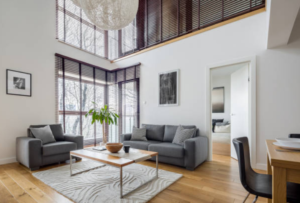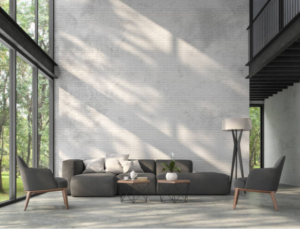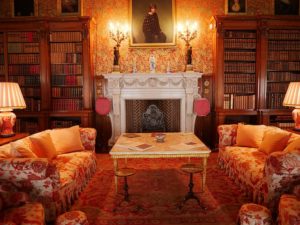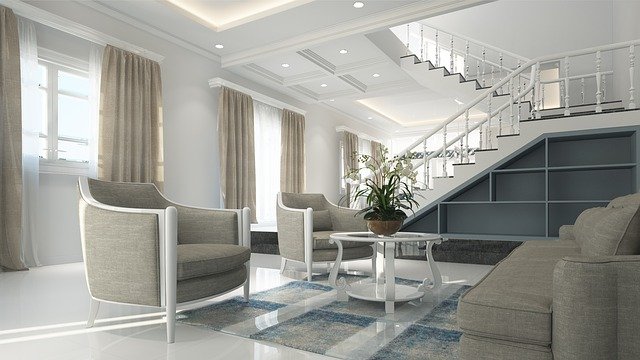There are many styles and formats for interior design. Some are completely distinct, while others have subtle differences. If you want to learn more about unique and non-orthodox interior designs, click here. Since each interior design has its style, understanding what makes each different is essential. To allow you to achieve visual perfection with much less hassle and to pick the right style for your space, here are the top trending interior design styles of 2021.
Minimalist Style
 Started by the minimalist art movement of the 1960s and 1970s and inspired by traditional Japanese design and Zen philosophy, minimalist interiors express the guiding concepts of modernism in an almost puritanical palette. Minimalism is an aesthetic that allows you to focus on design efficiency. Free of distractions and clutter, minimalist interiors are streamlined to maximize visual impact and effective use of space. With careful detailing and hidden storage, elements and patterns are kept to a minimum. Muted color tones are used with few accents. Light and dynamic interiors are created through the repetition of lines, movement, and generous use of natural light.
Started by the minimalist art movement of the 1960s and 1970s and inspired by traditional Japanese design and Zen philosophy, minimalist interiors express the guiding concepts of modernism in an almost puritanical palette. Minimalism is an aesthetic that allows you to focus on design efficiency. Free of distractions and clutter, minimalist interiors are streamlined to maximize visual impact and effective use of space. With careful detailing and hidden storage, elements and patterns are kept to a minimum. Muted color tones are used with few accents. Light and dynamic interiors are created through the repetition of lines, movement, and generous use of natural light.
Modern Style
Modern architecture and design, such as interiors, is a collective term for design styles united by material, technology, and composition through authenticity, transparency, and efficiency. Inspired by the Modernist art movement, the modernist style, which emerged in the early 20th century, redefines the perception of space and aesthetics to bring us closer to the world. A building is much more than a habitable structure. Modernist interiors often contain a complex layer of functional programming, precise compositions, and well-defined lines and geometries. Thus, the inherent materiality and visual simplicity of a form are an integral part of the design language.
Industrial Style
 Industrial interiors celebrate the modernist eye for efficiency and functionality, transforming the working parts of a building into its main aesthetic. To emphasize the “machine-to-machine” look of these interiors, beams, columns, pipes, and ductwork are in the foreground. It gives them a masculine look. Industrial-style interiors are not limited of weight and roughness. They rely on second-hand, salvaged, and recycled items, as well as many other facets of modernism. Industrial interiors are often the first choice when remodeling warehouses or loft-style buildings. They favor warm, neutral colors, such as grays and browns, and steel with concrete and exposed brick. Vintage industrial design can complement their décor and furniture choices.
Industrial interiors celebrate the modernist eye for efficiency and functionality, transforming the working parts of a building into its main aesthetic. To emphasize the “machine-to-machine” look of these interiors, beams, columns, pipes, and ductwork are in the foreground. It gives them a masculine look. Industrial-style interiors are not limited of weight and roughness. They rely on second-hand, salvaged, and recycled items, as well as many other facets of modernism. Industrial interiors are often the first choice when remodeling warehouses or loft-style buildings. They favor warm, neutral colors, such as grays and browns, and steel with concrete and exposed brick. Vintage industrial design can complement their décor and furniture choices.
Contemporary Style
Contemporary style, by definition, is contemporary and therefore an ever-changing color palette that reflects current trends and tastes. This style is difficult to categorize into a specific group or intention of features. However, as a design style, it is very different from Modernist design styles in that it offers a more balanced and equitable approach to interior design. Because the Mid-Century Modern style is so popular today, contemporary interiors are inspired by it; however, these elements, colors, and lines are arranged in softer compositions that accommodate both visual pleasure and functional efficiency. These are not cold or overly formal spaces, but warm and welcoming, much more fluid and instinctively designed.
Traditional Style
 Traditional style, or classical style, looks to the past for ideas for the future. It can go straight to the source or reinterpret classic ideas to bring tried and tested elements, patterns, and proportions into a modern setting. Its silhouettes bring a special touch to traditional European interiors. For example, wingback chairs, delicate furniture, claw-foot tabletops, and other furniture and accessories often have their roots in English, neoclassical, French country, colonial or 18th-century country house styles. The backdrop is often simple and pale, with rich colors, lines, profiles, and textures filling the space with classic opulence. These interiors feature dark lacquered wood furniture and architectural ornamentation.
Traditional style, or classical style, looks to the past for ideas for the future. It can go straight to the source or reinterpret classic ideas to bring tried and tested elements, patterns, and proportions into a modern setting. Its silhouettes bring a special touch to traditional European interiors. For example, wingback chairs, delicate furniture, claw-foot tabletops, and other furniture and accessories often have their roots in English, neoclassical, French country, colonial or 18th-century country house styles. The backdrop is often simple and pale, with rich colors, lines, profiles, and textures filling the space with classic opulence. These interiors feature dark lacquered wood furniture and architectural ornamentation.

